Azodicarbonamide
- CAS NO.:123-77-3
- Empirical Formula: C2H4N4O2
- Molecular Weight: 116.08
- MDL number: MFCD00007958
- EINECS: 204-650-8
- SAFETY DATA SHEET (SDS)
- Update Date: 2024-12-18 14:15:30
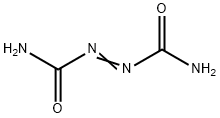
What is Azodicarbonamide?
Description
Azodicarbonamide, the diamide of azodicarboxylic acid, is an orange-red crystalline solid. It is made industrially by the condensation reaction between hydrazine sulfate and urea under high temperature and pressure, followed by oxidation with NaOCl.
Azodicarbonamide has several commercial uses: It is a blowing agent for foaming rubbers and plastics, a bleaching (oxidizing) agent in cereal flours, and a dough conditioner for baking bread.
In the United States, azodicarbonamide has GRAS (generally recognized as safe) status for food use. The World Health Organization also says it’s safe. But European countries and Australia have banned its use in food products, and some European countries have outlawed it for making plastics that come into contact with food. Some studies suggest that consuming it or its byproducts may lead to respiratory problems.
Earlier this year, the Subway fast-food chain, calling it a “shoe rubber chemical”, decided to remove azodicarbonamide from its bread-making process.
Chemical properties
orange crystalline powder
The Uses of Azodicarbonamide
Azodicarbonamide is a dough conditioner that exists as a yellow to orange-red crystalline powder practically insoluble in water. it is used in aging and bleaching cereal flour to produce a more manage- able dough and a lighter, more voluminous loaf of bread. it is used in bread flours and bread as a dough conditioner. it can be used with the oxidizing agent potassium bromate. a typical use level is less than 45 ppm.
The Uses of Azodicarbonamide
Azodicarboxamide is used as an additive to wheat flour breads and dough to improve the physical properties of the dough and the baking performance. It is also used to optimize the levels of oxidant/re ducing agents in the baking of wheat flour.
The Uses of Azodicarbonamide
As blowing and foaming agent for plastics; as maturing and bleaching agent in cereal flour.
Definition
ChEBI: Azodicarbonamide is an organic molecular entity.
General Description
A yellow to orange powder. Insoluble in water and common solvents. Soluble in dimethyl sulfoxide. Nontoxic.
Air & Water Reactions
Highly flammable. Water insoluble. Dust may form an explosive mixture in air.
Reactivity Profile
Azodicarbonamide is easily ignited and burns rapidly. Confined samples show a high rate of pressure rise during thermal decomposition, which produces carbon monoxide and nitrogen. Sensitive to temperatures exceeding 122°F. May be sensitive to exposure to light. Stable in bulk when stored for two weeks at temperatures up to 140°F. Slightly unstable in water suspension (showed1.3% decomposition at 2 mg/mL over a two-week period at room temperature in the light but no decomposition at 41°F over a two-week period in the dark . Reacts with hot water to give nitrogen, carbon monoxide, and ammonia [Hawley]. Decomposes in hot hydrochloric acid. Incompatible with strong acids and bases, and with compounds of metals.
Health Hazard
Inhalation or contact with vapors, substance or decomposition products may cause severe injury or death. May produce irritating, toxic and/or corrosive gases. Runoff from fire control may cause pollution.
Fire Hazard
Self-decomposition or self-ignition may be triggered by heat, chemical reaction, friction or impact. May be ignited by heat, sparks or flames. Some may decompose explosively when heated or involved in a fire. May burn violently. Decomposition may be self-accelerating and produce large amounts of gases. Vapors or dust may form explosive mixtures with air.
Flammability and Explosibility
Non flammable
Safety Profile
Flammable solid. When heated to decomposition it emits toxic fumes of NOx.
Properties of Azodicarbonamide
| Melting point: | 220-225 °C (dec.)(lit.) |
| Boiling point: | 217.08°C (rough estimate) |
| Density | 1.65 |
| vapor pressure | 0Pa at 25℃ |
| refractive index | 1.4164 (estimate) |
| Flash point: | 225 °C |
| storage temp. | Flammables area |
| solubility | water: soluble0.033g/L at 20°C |
| pka | 14.45±0.50(Predicted) |
| form | Solid |
| color | Orange-red powder or crystals |
| Odor | odorless |
| Water Solubility | SOLUBLE IN HOT WATER |
| Merck | 14,919 |
| BRN | 1758709 |
| Stability: | Highly flammable. Incompatible with strong oxidizing agents, strong acids, strong bases, heavy metal salts. |
| CAS DataBase Reference | 123-77-3(CAS DataBase Reference) |
| NIST Chemistry Reference | Diazenedicarboxamide(123-77-3) |
| EPA Substance Registry System | Azodicarbonamide (123-77-3) |
Safety information for Azodicarbonamide
| Signal word | Danger |
| Pictogram(s) |
 Flame Flammables GHS02  Health Hazard GHS08 |
| GHS Hazard Statements |
H228:Flammable solids H334:Sensitisation, respiratory |
| Precautionary Statement Codes |
P210:Keep away from heat/sparks/open flames/hot surfaces. — No smoking. P240:Ground/bond container and receiving equipment. P241:Use explosion-proof electrical/ventilating/lighting/…/equipment. P261:Avoid breathing dust/fume/gas/mist/vapours/spray. P280:Wear protective gloves/protective clothing/eye protection/face protection. |
Computed Descriptors for Azodicarbonamide
| InChIKey | XOZUGNYVDXMRKW-AATRIKPKSA-N |
Azodicarbonamide manufacturer
Ajanta Group Of Industries
New Products
(S)-3-Aminobutanenitrile hydrochloride 4-Methylphenylacetic acid N-Boc-D-alaninol N-BOC-D/L-ALANINOL Tert-butyl bis(2-chloroethyl)carbamate N-octanoyl benzotriazole 3-Morpholino-1-(4-nitrophenyl)-5,6-dihydropyridin- 2(1H)-one Furan-2,5-Dicarboxylic Acid S-2-CHLORO PROPIONIC ACID ETHYL ISOCYANOACETATE 2-Bromo-1,3-Bis(Dimethylamino)Trimethinium Hexafluorophosphate 4-IODO BENZOIC ACID 3-NITRO-2-METHYL ANILINE 1-(2,4-DICHLOROPHENYL) ETHANAMINE (2-Hydroxyphenyl)acetonitrile 4-Bromopyrazole 5,6-Dimethoxyindanone 2-(Cyanocyclohexyl)acetic acid 4-methoxy-3,5-dinitropyridine 1-(4-(aminomethyl)benzyl)urea hydrochloride 2-aminopropyl benzoate hydrochloride diethyl 2-(2-((tertbutoxycarbonyl)amino) ethyl)malonate tert-butyl 4- (ureidomethyl)benzylcarbamate Ethyl-2-chloro((4-methoxyphenyl)hydrazono)acetateRelated products of tetrahydrofuran
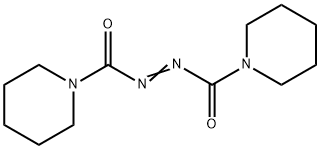


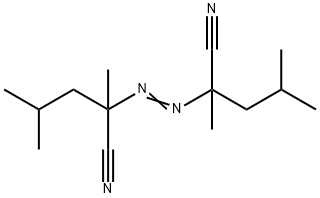
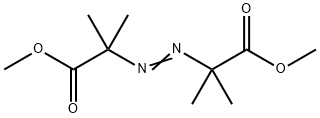
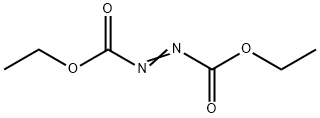
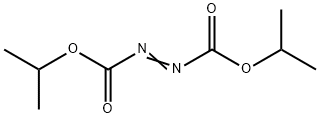

You may like
-
 Azodicarbonamide 98%View Details
Azodicarbonamide 98%View Details -
 123-77-3 98%View Details
123-77-3 98%View Details
123-77-3 -
 Azodicarbonamide 98%View Details
Azodicarbonamide 98%View Details
123-77-3 -
 Azodicarbonamide 123-77-3 99%View Details
Azodicarbonamide 123-77-3 99%View Details
123-77-3 -
 Azodicarbonamide CAS 123-77-3View Details
Azodicarbonamide CAS 123-77-3View Details
123-77-3 -
 Azodicarbonamide, 97% CAS 123-77-3View Details
Azodicarbonamide, 97% CAS 123-77-3View Details
123-77-3 -
 Azodicarbonamide 97% CAS 123-77-3View Details
Azodicarbonamide 97% CAS 123-77-3View Details
123-77-3 -
 118753-70-1 98+View Details
118753-70-1 98+View Details
118753-70-1